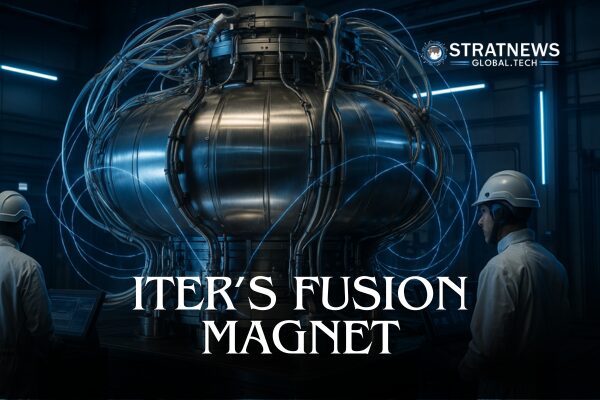ITER World’s Strongest Magnet: A Key Step in the Fusion Journey
A long-delayed international nuclear fusion project is now assembling the world’s most powerful magnet, marking a crucial milestone. The International Thermonuclear Experimental Reactor (ITER), based in southern France, is a collaborative effort involving more than 30 countries, including the United States, China, Japan, Russia, and the European Union.
The magnet system is central to ITER’s goal of generating clean energy. It is designed to form an invisible cage, known as a magnetic confinement, to contain superheated plasma. This plasma is where fusion occurs, as atomic particles combine under extreme temperatures to release vast amounts of energy.
The final part of the magnetic system, called the central solenoid, was completed and tested by the United States. ITER confirmed this week that the magnet is now being assembled on site.
Overcoming Delays in Construction
The central solenoid was initially due for completion in 2021. However, a series of delays pushed the project back by four years. Charles Seife, a professor at New York University and author on nuclear fusion, pointed to the delay as a sign of ongoing challenges within the project.
Despite setbacks, ITER’s Director General, Pietro Barabaschi, stated that the most difficult phase is now behind them. He confirmed that the project is progressing at its fastest pace to date. The team aims to begin the start-up phase in 2033, which involves the generation of plasma, a key step before actual energy production.
Using an analogy, Barabaschi said, “It is like the bottle in a bottle of wine: of course the wine is maybe more important than the bottle, but you need the bottle in order to put the wine inside.”
Global Unity and Future Hurdles
The ITER project has been notable for its ability to maintain international cooperation, even in the face of geopolitical tension. Barabaschi highlighted the shared objectives among member countries and noted there has been no sign of any partner withdrawing.
At the same time, private companies are increasingly investing in fusion research. Dozens of start-ups claim they can produce commercial fusion reactors within the next decade. While Barabaschi expressed support for these ventures, he remained cautious.
“We already know that we can get fusion,” he said. “The question is, are we going to get fusion in such a way that it would be cost-effective? I am quite sceptical that we will be able to achieve this within, say, one or even two decades. Frankly speaking, it will take more time.”
Fusion remains one of the most promising paths to clean and abundant energy. As ITER advances, it continues to represent a rare model of global cooperation in science.
with inputs from Reuters


